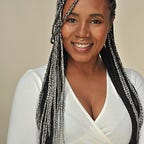Decolonizing our narrative: Womxn of the Nile
Without the stories of my mothers, who am I
As daughters of the Nile, our stories run deep. For too long our stories have been muted.
Without the dreams of my mothers, who am I
Our tales have been shaped through a lens, not of our making. To falsify a perspective that never was nor is of our making.
Without the struggles of my mothers, who am I
We are the daughters of the Nile and we have come to reclaim what has been stolen from us, our narrative.
Without the pain of my mothers, who am I
We are the daughters of the Nile our mothers dreams. Our resiliency stems from generations of overcoming struggles.
Without the songs of my mothers, who am I
We find ourselves in a spiritual trance guided by movement, fuelled by songs that awaken every cell.
My mothers were more than the narratives imposed on them would have you believe. We are more than the boxes the colonizers have put us in. We are daughters of the Nile, we are the womxn of the Nile.
We are queens.
We are kandakas.
We are reincarnations of Nefrititi, Sekhmet, Isis, Bastet, Hathor, Hetheru, and more.
We are reclaiming our stories, we are decolonizing our narrative.
We are the Womxn of the Nile…
I would be lying if I said there was only one woman who inspired me.
There’s a new wave of Sudanese women — modern day kandakas — who have been at the forefront of my country’s transformation. I say “transformation” and not “revolution” because to me, a revolution can be quite polarising and uncomfortable. A transformation means both the certain and uncertain, and the negative and positive, are all openly embraced. A transformation means the journey never ends.
Sudan’s transformation through the eyes of these present day kandakas, these modern African queens, has instilled in me an energy that I never knew I was capable of feeling. For most of my life my relationship with Sudan was something I didn’t want to confront. Having never lived there, I accepted the commonly told narrative of my home country as told from a pessimistic and patriarchal lens. To me, Sudan was a place over there where women either sold tea on the side of the road or were publicly flogged for wearing pants. I would often ask myself why I should bother caring about Sudan when Sudan would never care about me.
December 2018 changed that perception. As more and more footage emerged of women taking to the streets, chanting for their rights, helping the wounded. Women getting beaten, harassed, arrested, snatched from their families, intimidated with rape and violence. Women who washed their bloodied clothes and their open wounds, kissed their families goodbye and went back to the streets to fight for a new Sudan. A Sudan who’s love and beauty was buried by politics and greed. A Sudan that could care for me the way I long to care for it.
I would be lying if I said there was only one woman who inspired me, because these women, these African queens, these kandakas are my inspiration.
It’s impossible to pick just one. My grandfather was passionate about Egyptology, and would take every opportunity to make sure we understood and were rooted in our incredible history. It’s thanks to him that I grew up learning about Egypt’s rich lineage of mighty female kings that ascended the throne as sole monarchs and heads of state. From Neferusobek to Hatshepsut, Nefertiti to Cleopatra, these women took turns ruling one of the greatest civilizations to ever exist on Earth. There is so much strength in knowing that I’m descended from a long line of defiant, rule-breaking women who stood in their power amongst their male counterparts and significantly impacted the course of history. Make sure you know your foremothers, the women who came from the same earth and were watered by the same skies that birthed you. Especially when the writers of history have tried to erase them.
The Kingdom of Kush was a vibrant civilization that ran along the banks of the river Nile. The city of Kerma was established in Kush by c. 2400 BCE and was powerful enough to threaten Egypt as attested by Egyptian inscriptions and forts built to repel raids from the south, and later established a lucrative trade for both parties and Egypt relied on Kerma (Kush) for the import of gold, ebony, incense, exotic animals, and ivory among other luxury items.
It also was during this era that my ancestors worshiped many gods and goddess, some shared with the Egyptians, Sekhmet (The Powerful One) is the one I have been most inspired by. Sekhmet was a warrior goddess as well as a goddess of healing. She was depicted as a lioness and was seen as the protector of the pharaohs and led them in warfare. She was associated with the goddesses given the title “Eye of Ra”. Sekhmet’s role was to preserve law and Ma’at (justice or balance) while also being a healer and patron goddess to physicians. She was also known as the “Lady of Pestilence” and the “Red Lady” and it was thought that she could send plagues against those who angered her.
It’s this dichotomy that resonated with me and why I am enthralled by her myth. She is a symbol of strength, balance, and healing. This holistic portrayal guides me as I put my best efforts in life to be of service to my community. As a daughter of Kush the preservation of Ma’at and healing are vital in honouring my ancestors legacy.
